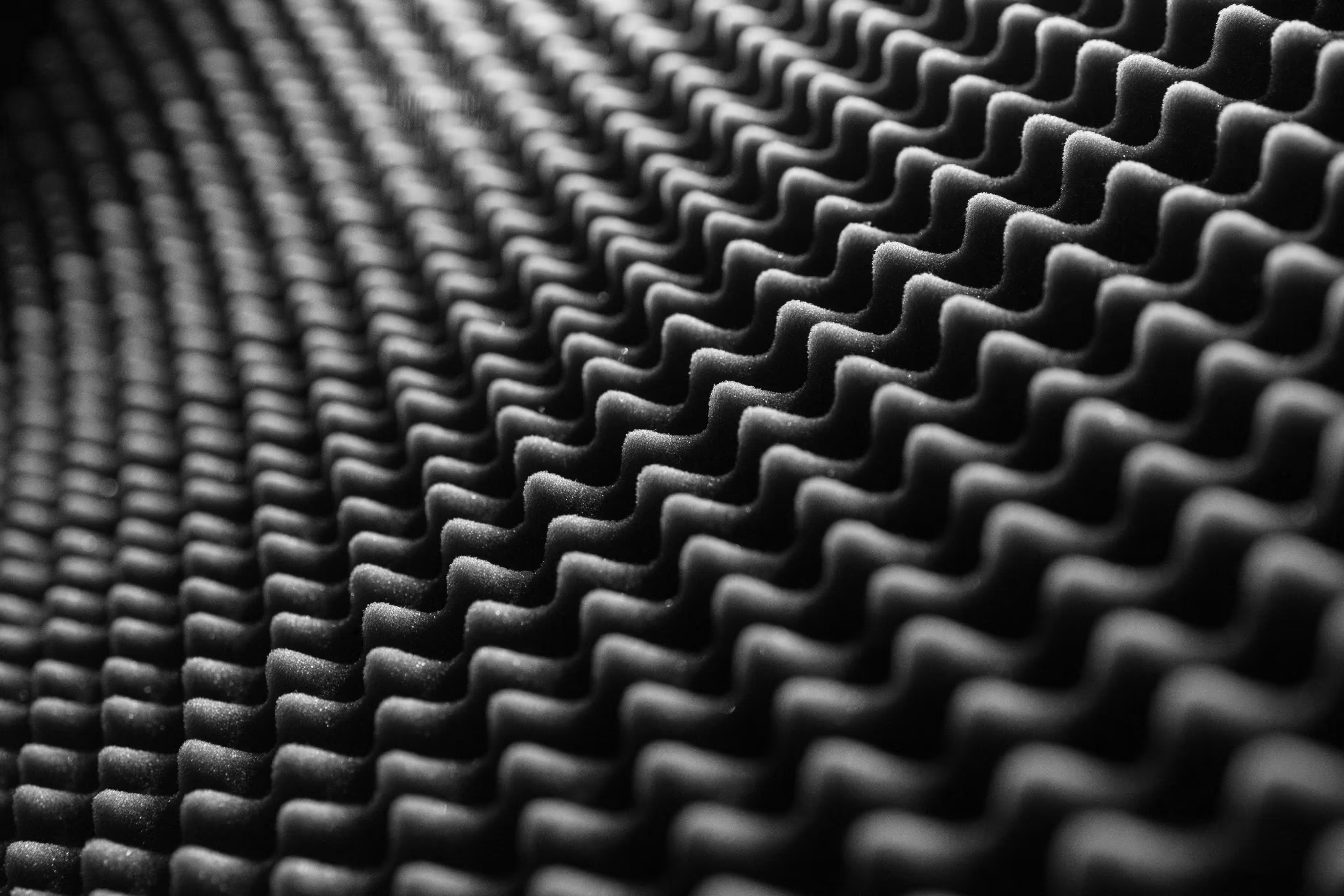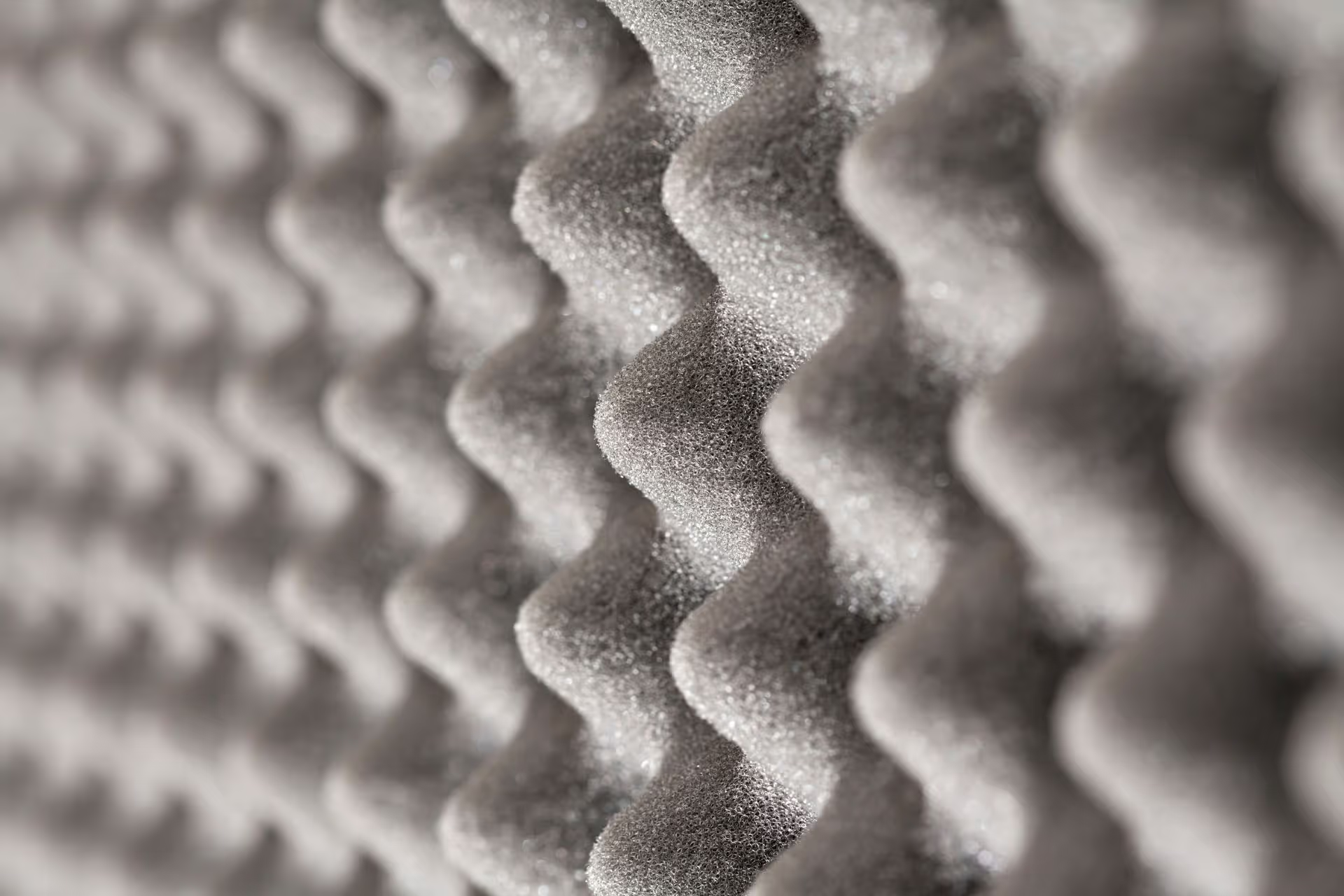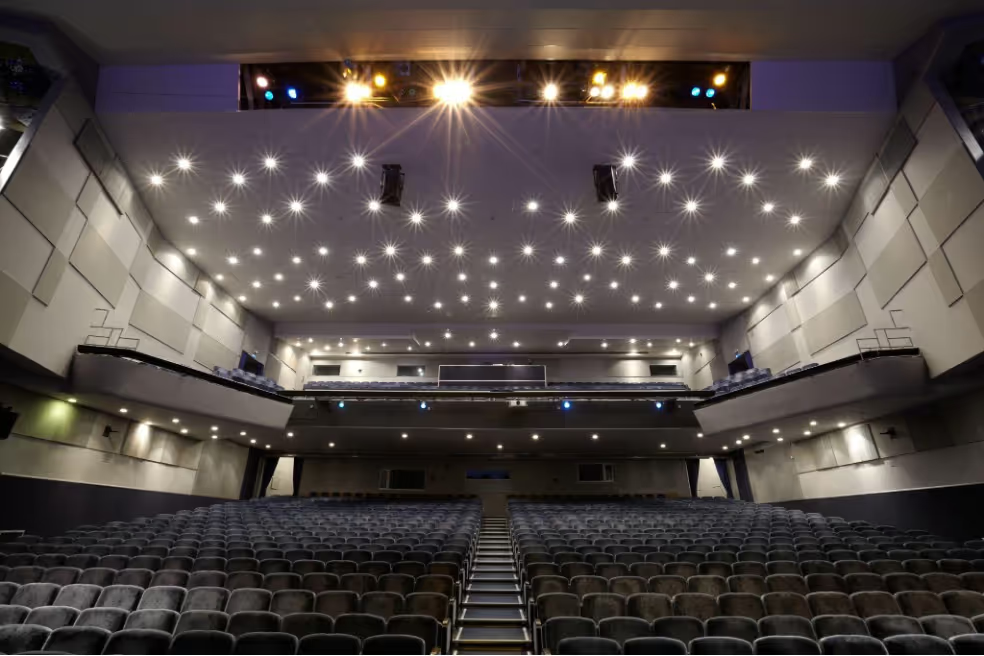
When you think of modern architecture, you probably picture minimalist design with lots of sleek surfaces like concrete, glass, and hardwood floors. While that may be elegant, these hard reflective surfaces create a major acoustic problem. When sound waves are emitted in such a space, they reflect repeatedly, generating a chaotic auditory environment where sounds overlap and smear together, reducing speech intelligibility and making the entire space uncomfortable to be in.
Sound-absorbing panels, also known as acoustic panels, are specifically designed to address these issues by controlling the behavior of sound within a room. Unlike soundproofing (which blocks sound from traveling into or out of a room), acoustic panels manage and improve the sound quality within a space by reducing echoes, reverberation, and ambient noise. In the article, we’ll take a look at how effective sound-absorbing panels are, best practices when it comes to using them, and how companies like Memtech Acoustics can help create far more harmonious spaces.
Key takeaways:
- Acoustic panels improve sound clarity by reducing echoes and reverberation – unlike soundproofing, they manage sound inside a room for clearer, more comfortable acoustics.
- Performance depends on design and material – porous cores like fiberglass or mineral wool convert sound energy into heat, while thickness and density determine how well panels handle different frequencies.
- NRC and SAA ratings measure effectiveness – these industry metrics quantify how much sound a panel absorbs across frequency ranges, helping match the right panel to the right environment.
- Proper placement is crucial – panels work best when positioned at reflection points, spaced evenly, and sometimes installed with air gaps for better low-frequency absorption.
- Panels deliver benefits beyond sound quality – they enhance comfort, productivity, and privacy in offices, classrooms, restaurants, homes, and studios, while also serving as stylish, safe design elements.
How do acoustic panels work?
To understand the effectiveness of acoustic panels, you first need to understand the physical principle that governs their function: acoustic absorption. In the field of acoustics, absorption is defined as the process by which a material takes in sound energy rather than reflecting it. When a sound wave encounters a hard surface, a majority of its energy is reflected back into the room.
When that same sound wave strikes a sound-absorbing panel, it enters the porous material of the panel. Inside, the sound energy causes the material's fibers or particles to vibrate, which generates friction and converts the sound energy into a negligible amount of heat. This process is often likened to a sponge soaking up water, and the more porous the material, the more effective it is at this energy conversion.
A standard acoustic panel is a precisely engineered device built around this principle. Its construction typically involves a wooden frame filled with a sound-absorbent core and wrapped in a breathable fabric. The core material, such as fiberglass, mineral wool, or open-cell foam, is the primary driver of the panel's performance, not the aesthetic fabric wrap.
While acoustic panels may be powerful tools when it comes to sound management, they’re just one component in a broader acoustic treatment strategy. Other tools in the sound management equation include:
- Bass traps: These are specialized, thicker absorbers specifically engineered to target and reduce low-frequency sound waves that tend to build up in the corners of a room, creating an uneven and often "muddy" sound.
- Diffusers: Unlike absorbers, diffusers scatter sound reflections. When a sound wave hits a diffuser, it is broken up and dispersed in multiple directions across a room. This is beneficial for creating a more natural, spacious, and "live" sound, and it is a popular treatment in recording studios and home theaters to avoid an over-dampened or "dead" acoustic environment.
How to reduce echo in a room – the metrics that matter
The effectiveness of a sound-absorbing panel is a measurable, quantifiable property. Two primary metrics are used in the industry to rate the sound absorption performance of materials: the Noise Reduction Coefficient (NRC) and the Sound Absorption Average (SAA).
The Noise Reduction Coefficient (NRC) is a single-number rating that provides a simplified measure of a material's average sound absorption across a specific range of mid-frequencies, ranging from 0.0 to 1.0. An NRC of 0.85 means the material absorbs approximately 85% of the sound energy that strikes it. The NRC is calculated by averaging the material's sound absorption coefficients at four specific octave bands: 250 Hz, 500 Hz, 1,000 Hz, and 2,000 Hz.
The Sound Absorption Average (SAA) is a newer, more precise standard and is considered a better indicator of performance. Similar to NRC, SAA is a single-number value, but it is calculated by averaging absorption coefficients from a wider range of twelve 1/3 octave frequency bands, spanning from 200 Hz to 2,500 Hz. This broader dataset and finer granularity provide a more accurate representation of a material’s performance, particularly for low-frequency sound absorption.
While NRC and SAA are valuable, a material's absorption performance is highly dependent on the frequency of the sound wave. For example, a 1-inch-thick panel might be highly effective at absorbing high-frequency sounds but have almost no impact on low-frequency bass notes. Thicker, denser panels are more effective at absorbing lower frequencies because these waves have longer wavelengths and require more mass to convert their energy into heat.
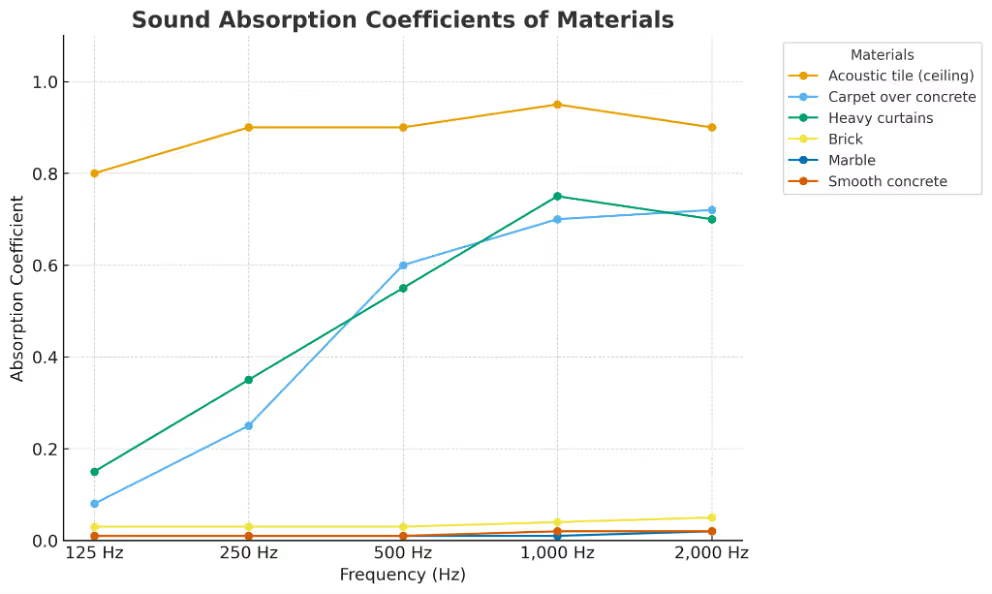
While NRC and SAA are valuable, a material's absorption performance is highly dependent on the frequency of the sound wave. For example, a 1-inch-thick panel might be highly effective at absorbing high-frequency sounds but have almost no impact on low-frequency bass notes. Thicker, denser panels are more effective at absorbing lower frequencies because these waves have longer wavelengths and require more mass to convert their energy into heat.
A range of benefits for every environment
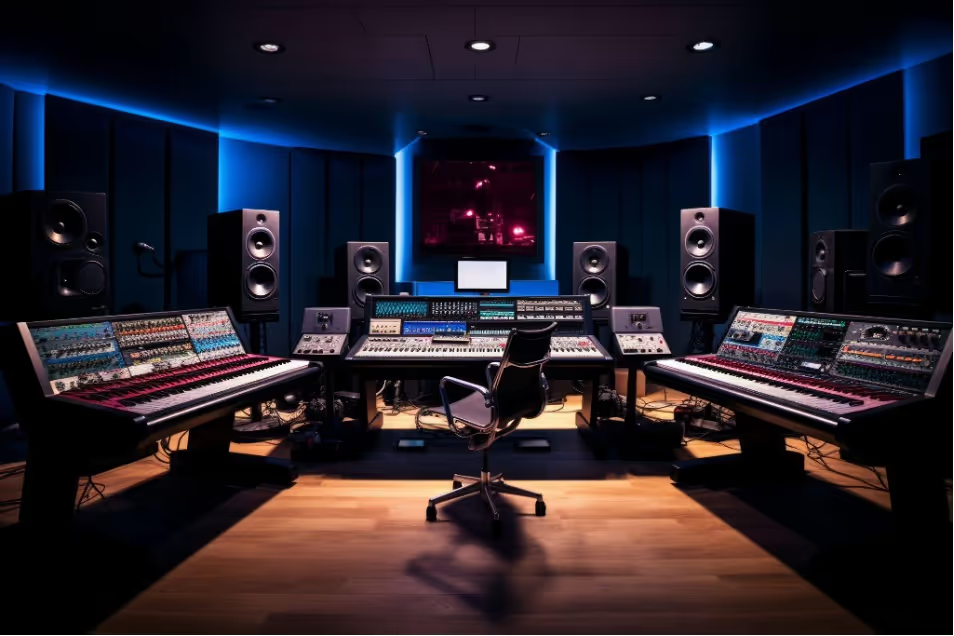
The benefits of a well-treated space extend beyond mere sound quality. A quieter, more acoustically balanced environment can have a major impact on comfort, productivity, and health. Noise pollution, whether from loud conversations in an office or reverberating sounds in a home, can increase stress, reduce the ability to focus, and, over time, potentially contribute to hearing loss. Sound-absorbing panels reduce these risks by creating a serene atmosphere that encourages concentration and relaxation.
In residential settings, panels can enhance entertainment by creating a more immersive audio environment for home theaters or gaming rooms. They also increase privacy by absorbing conversations and create a sanctuary in bedrooms and home offices, leading to more restful sleep and a more productive work-from-home experience.
In commercial spaces, panels are crucial for managing noise in open-plan offices, allowing employees to concentrate better and increasing their productivity. They also optimize the customer experience in restaurants by dampening noise, and improve communication in classrooms by minimizing echoes and making it easier for speakers to be heard.
For professional acoustic environments like recording studios, panels are vital for creating a "reflection-free zone." This makes sure that what the engineer hears is a faithful reproduction of the sound source. Without proper treatment, even expensive equipment will produce degraded sound due to echoes and frequency imbalances.
Installation best practices
The effectiveness of acoustic panels is directly related to their placement, with proper installation making a profound difference to the final acoustic result. Panels shouldn’t be placed randomly, they need to be positioned where noise levels are highest and where sound waves tend to build up or reflect. While people tend to clump panels together (for aesthetic purposes), an even spread throughout the room is far more effective for creating a balanced acoustic environment.
For spaces like home theaters and recording studios, a straightforward technique is to identify and treat the "first reflection points." These are the areas on the walls and ceiling where sound from your speakers first bounces before reaching your ears, causing echoes and comb filtering.
A simple method for finding these points is the "mirror trick". This involves sitting in your regular listening position, while a friend slides a mirror along the wall. Any point where you can see a speaker's reflection is a reflection point, and a panel should be placed there to absorb the sound.
Other placement considerations include placing panels at eye and ear level for seated occupants, leaving a 2 to 4-inch air gap behind a panel to increase sound absorption for lower frequencies, and treating parallel walls to prevent direct sound bounce-back.
When it comes to physical installation, a variety of mounting methods are available, with the choice depending on the panel's weight, the wall material, and the user's desire for a permanent or temporary installation. A quick guide to the methods is as follows:
Choosing the best acoustic panel for your project
Selecting the right acoustic panel involves a mix of acoustic performance, material properties, and aesthetic design. The core material is the most important factor in a panel's effectiveness, but its physical properties also dictate its suitability for different applications.
Fiberglass: As a compressed board, fiberglass is rigid, lightweight, and holds its shape well. It has a very high NRC rating, often exceeding that of mineral wool panels. Its rigidity and light weight make it easy to hang and ensures it won’t sag over time.
Mineral wool: Denser and heavier than fiberglass, mineral wool comes as a loose material that must be packed into a frame to create a panel. While its higher density can give it a higher STC rating (sound blocking ability), its performance as an absorber can be compromised by the frame, which reflects sound. Mineral wool panels are also more cumbersome to install due to their weight.
Acoustic foam: A popular choice for its low cost and ease of installation, acoustic foam is typically made from open-celled polyurethane. It is effective at absorbing mid- and high-frequency sound waves but is generally not dense enough to be an effective absorber for lower frequencies, nor can it serve as an effective bass trap.
Modern acoustic panels are more than just utilitarian objects, they’ve become functional elements of interior design. Available in a wide range of colors, patterns, textures, and custom shapes that allow them to blend smoothly with any décor. Beyond aesthetics, safety plays a key role in their application, especially in commercial and public spaces where fire ratings are vital. The ASTM E84 Class A rating, the highest standard, signifies exceptional resistance to flame spread and minimal smoke generation, making these panels not only visually versatile but also safe for use in environments such as classrooms, offices, auditoriums, and even residential settings.
How Memtech Acoustics can help
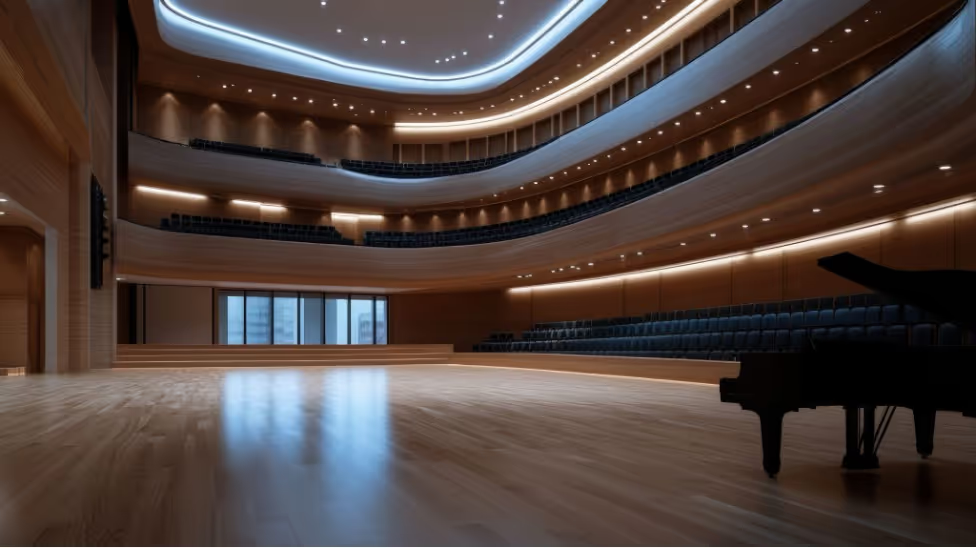
Sound-absorbing panels may not be a magic bullet for all noise problems, but they are a highly effective solution for a wide range of acoustic challenges. At Memtech Acoustics, we deliver tailored noise control solutions that improve communication, comfort, and compliance across any number of industries and environments.
Our product line spans acoustic wall and ceiling panels, enclosures, noise barriers, quiet curtains, sound masking systems, and vibration control products each engineered for measurable performance, with NRC ratings up to 1.05 and Class 1 (A) fire safety compliance.
With clients typically achieving a 20–50% reduction in reverberation time, improved speech clarity, and fewer noise complaints, we provide the data-driven expertise needed to create peaceful environments where the only sounds are the ones you want. Get in touch with Memtech Acoustics and find the acoustic answer you’re looking for.
